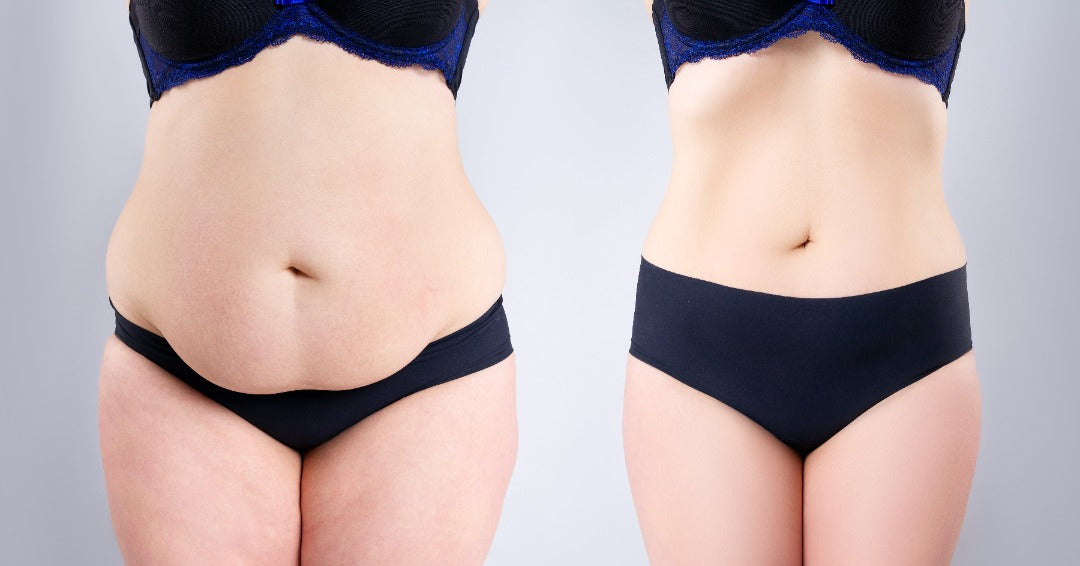Tummy Tuck Abdominoplasty: Essential Guide to Surgery, Benefits & Recovery
A tummy tuck abdominoplasty is a surgery designed to remove excess skin and fat from the abdomen while tightening the muscles. Many people opt for this procedure to achieve a firmer midsection, especially after significant weight loss or pregnancy. This guide will cover everything you need to know—from different types of tummy tucks to preparation, recovery, and results.
Key Takeaways
-
A tummy tuck, or abdominoplasty, is a surgical procedure aimed at removing excess skin and fat while tightening abdominal muscles to enhance the midsection’s appearance.
-
There are two main types of tummy tucks: the full tummy tuck for widespread excess skin and fat, and the mini tummy tuck for minor concerns, each with distinct incision sizes and recovery times.
-
Proper pre-operative preparation, including health assessments and lifestyle adjustments, along with post-operative care, are essential for a successful surgery and recovery.
Understanding Tummy Tuck Abdominoplasty

A tummy tuck, or abdominoplasty, is a body-contouring surgery designed to remove excess fat and skin while tightening the abdominal muscles. The primary goal of this cosmetic procedure is to sculpt the midsection, providing a firmer and more aesthetically pleasing appearance. Typically lasting between two to three hours, the tummy tuck procedure often involves tightening the connective tissue in the abdomen with sutures.
This major surgery is particularly beneficial for individuals who have loose, sagging skin due to significant weight loss or pregnancy. Addressing these concerns with a tummy tuck and aesthetic plastic surgery can restore confidence and enhance body image.
Repositioning the belly button is also part of the tummy tuck procedure to ensure a natural look after excess skin removal.
Types of Tummy Tucks

There are primarily two types of tummy tucks: the full tummy tuck, also known as complete abdominoplasty, and the mini tummy tuck. A full tummy tuck requires a longer incision across the lower abdomen and is suitable for individuals with widespread excess skin or fat. This comprehensive procedure addresses both the upper and lower abdomen, providing a more dramatic transformation.
In contrast, the mini tummy tuck is less invasive and focuses on the area below the belly button. Ideal for those with minor concerns, this procedure involves a smaller incision and a shorter recovery period. Knowing the differences between these tummy tuck types aids in deciding which procedure suits your specific needs with your plastic surgeon.
Preparing for Your Tummy Tuck Surgery
Preparation for your tummy tuck surgery begins with thorough consultations with your plastic surgeon. During these consultations, your health history, previous surgeries, medications, and expectations will be assessed. Effective communication about the risks and potential outcomes is crucial for informed consent.
Quitting smoking at least one month before surgery is crucial to reduce complication risks and aid the healing process. A good candidate for tummy tuck surgery is in overall good health and is either a non-smoker or willing to stop smoking for several weeks around the surgery. Avoiding blood thinners and certain supplements before surgery helps prevent excessive bleeding.
Thorough preparation significantly influences the success of your surgery and recovery, ensuring optimal results. Make sure to follow your surgeon’s instructions closely and maintain open communication throughout the process.
The Tummy Tuck Procedure

The tummy tuck procedure is performed under general anesthesia, ensuring you are completely asleep and pain-free during the surgery. The plastic surgeon creates a hip-to-hip incision for a full tummy tuck, allowing them to remove excess skin and fat effectively. For a mini tummy tuck, the incision is smaller and focused on the lower abdomen.
During the procedure, the abdominal muscles may be repaired and tightened, enhancing the overall contour of your abdomen and the upper abdominal skin. The belly button is often repositioned to maintain a natural appearance after the excess skin is removed.
This major surgery typically lasts between two to four hours, depending on the complexity. After the surgery, patients are monitored in a recovery area until they wake up from anesthesia.
Post-Surgery Expectations
After tummy tuck surgery, you can anticipate feelings of fatigue. Disorientation is also a common experience during the recovery period. Fatigue and restricted movement may make it challenging to drive for 2-3 weeks post-surgery. Soreness in the abdomen is common, and adhering to post-operative care instructions is crucial for a smooth recovery.
Proper nutrition, including balanced meals, supports recovery and aids in wound healing. Wearing loose, comfortable clothing can help ease the recovery process. Following your surgeon’s instructions, like wearing compression garments and attending follow-ups, is crucial to monitor your progress.
Arrange for assistance at home and ensure easy access to frequently used items before surgery.
Managing Risks and Complications
Like any major surgery, a tummy tuck comes with potential risks and complications. These can include seroma (fluid accumulation), poor wound healing, and tissue damage, particularly in smokers. Patients also face risks such as anesthesia complications, bleeding, and skin issues like discoloration or prolonged swelling.
More significant risks such as deep vein thrombosis, cardiac, and pulmonary complications can arise during or after the procedure. Infection, blood clots, and poor wound healing are complications that necessitate close monitoring during recovery.
Knowing these risks and how to manage them is crucial for a safe and successful outcome.
Benefits of a Tummy Tuck

A tummy tuck offers numerous benefits, including improved abdominal contour and strength. Removing excess skin and fat results in a flatter abdominal profile and can significantly enhance body image. For many, it also means the elimination of low abdominal stretch marks.
Additionally, abdominoplasty can enhance abdominal wall strength, providing better core support and stability. This can be particularly beneficial for individuals who have experienced significant weight loss or pregnancy, as it helps in tightening loose abdominal muscles.
Maintaining Results After Surgery
Maintaining the results of your tummy tuck involves a commitment to a stable weight and healthy lifestyle. Avoiding major fluctuations in weight is essential to preserve the outcomes of the surgery. A nutritious diet rich in lean proteins, fruits, and vegetables supports long-term results.
Regular physical activity, including both cardio and strength training, helps keep the abdominal area toned post-surgery. Adhering to your surgeon’s advice on post-operative care and lifestyle changes helps maintain the benefits of your tummy tuck.
Who is an Ideal Candidate?
Ideal candidates for a tummy tuck usually have excess skin with lost elasticity and severely weakened or separated abdominal muscles. Individuals who have experienced significant weight loss or pregnancy often seek full tummy tucks to address loose skin and achieve a flatter abdomen.
Good candidates should be in overall good health and have realistic expectations about the outcomes of the surgery. Obese individuals are generally not considered suitable candidates for tummy tuck surgery.
Cost and Insurance Considerations
The cost of a tummy tuck can vary significantly based on factors such as anesthesia, facility charges, and geographic location. Urban areas or those with higher living expenses often have elevated fees for surgical procedures.
Insurance may cover some costs if the procedure is medically necessary, such as after significant weight loss. Patients can also use flexible spending accounts (FSA) or health savings accounts (HSA) to help manage expenses, and many plastic surgery centers offer financing options.
Choosing the Right Surgeon

Choosing the right surgeon is crucial for a successful tummy tuck procedure. Select a surgeon certified by the American Board of Cosmetic Surgery to ensure a high standard of safety and ethics. Opt for a plastic surgeon with significant experience in performing tummy tucks.
Reviewing before-and-after photos and patient reviews can provide valuable insights into a plastic surgeons skill and the results you might expect. A personal consultation allows you to assess their approach and commitment to your desired outcomes.
Summary
In summary, a tummy tuck can be a transformative procedure for those looking to remove excess skin and fat and achieve a firmer, more toned abdomen. By understanding the different types of tummy tucks, preparing adequately, and choosing the right surgeon, you can ensure a successful surgery and recovery.
If you’re considering a tummy tuck, take the time to research and plan thoroughly. With the right preparation and care, you can enjoy the long-lasting benefits of this cosmetic procedure and regain confidence in your appearance.
Frequently Asked Questions
What is a tummy tuck?
A tummy tuck, or abdominoplasty, is a surgical procedure designed to remove excess skin and fat from the abdomen while also tightening the abdominal muscles, resulting in a firmer and more contoured appearance.
What are the different types of tummy tucks?
There are two primary types of tummy tucks: the full tummy tuck, which targets both the upper and lower abdomen, and the mini tummy tuck, which primarily addresses the area below the belly button.
How long is the recovery period after a tummy tuck?
The recovery period after a tummy tuck is generally 2-3 weeks for resuming everyday activities, during which patients may experience soreness and fatigue. It is essential to follow post-operative care instructions to ensure a smooth recovery.
What are the potential risks of a tummy tuck?
A tummy tuck carries potential risks such as seroma, poor wound healing, tissue damage, anesthesia complications, and the more serious concern of deep vein thrombosis. It is crucial to be aware of these risks when considering the procedure.
How can I maintain the results of my tummy tuck?
To maintain the results of your tummy tuck, it is essential to stabilize your weight, adhere to a nutritious diet, and engage in consistent physical activity. These practices will help ensure your results last.




